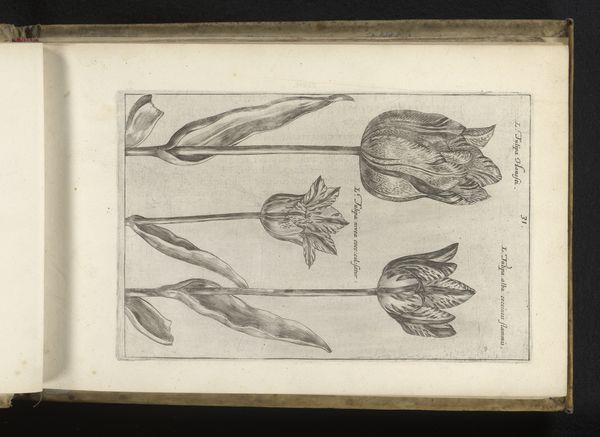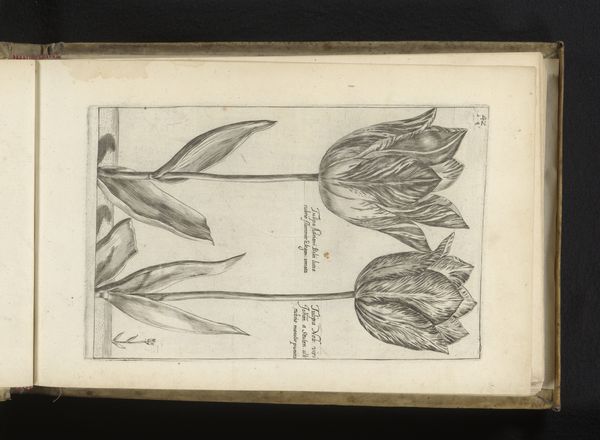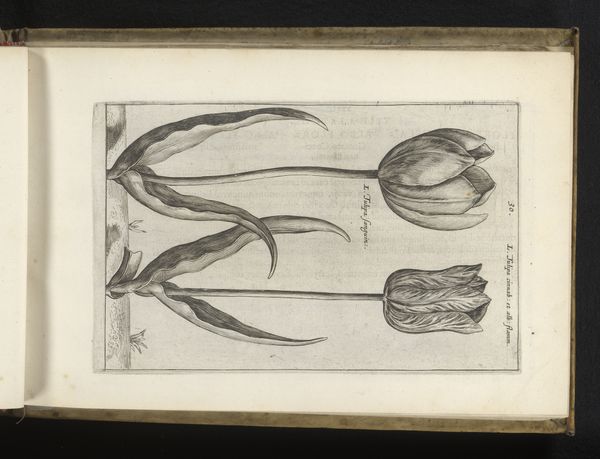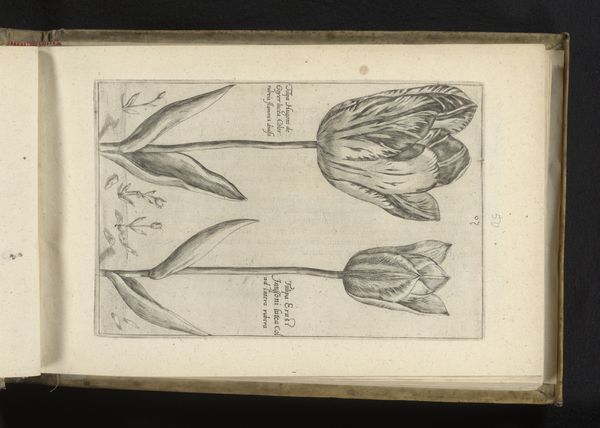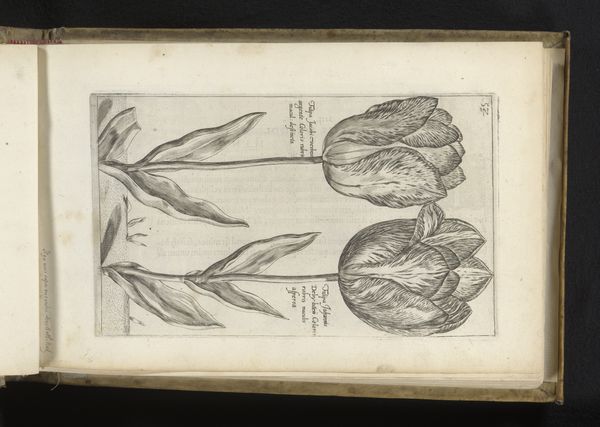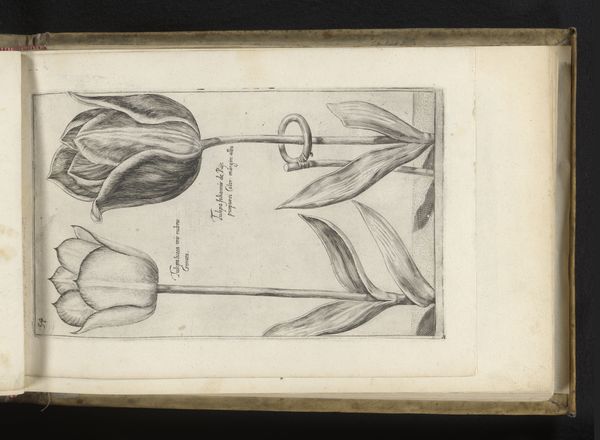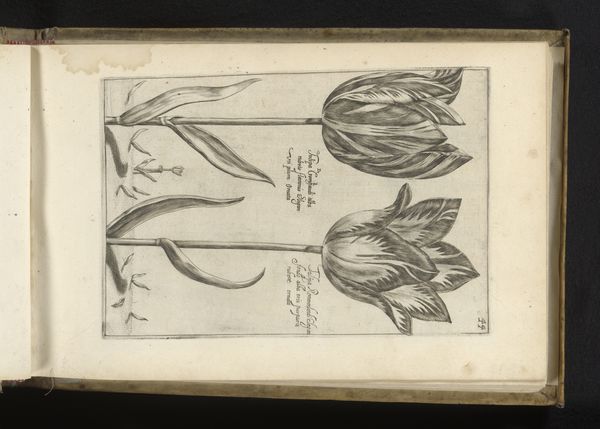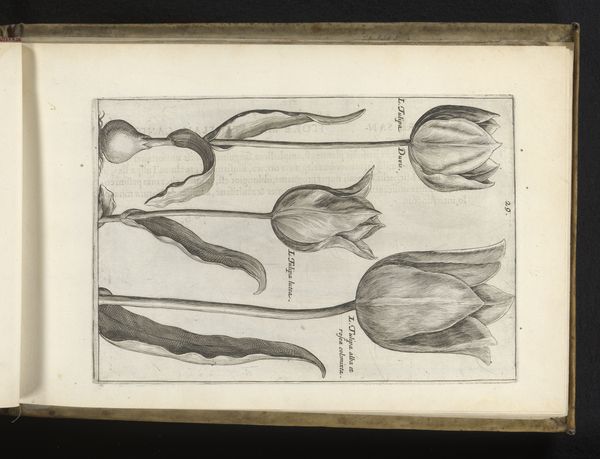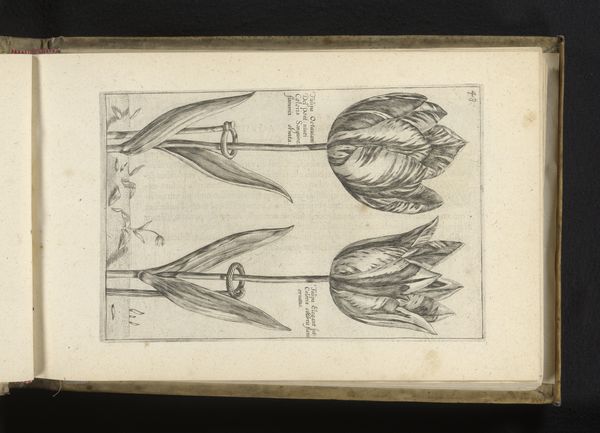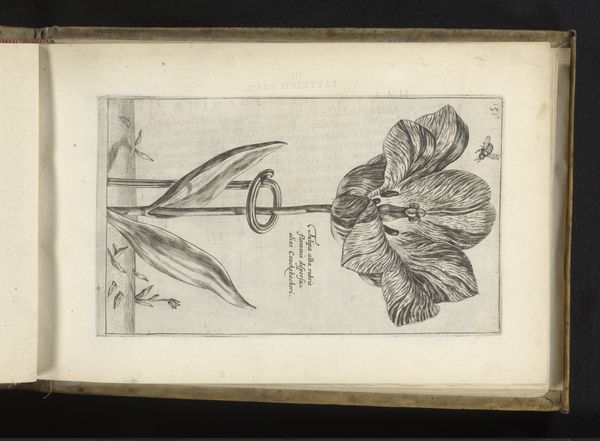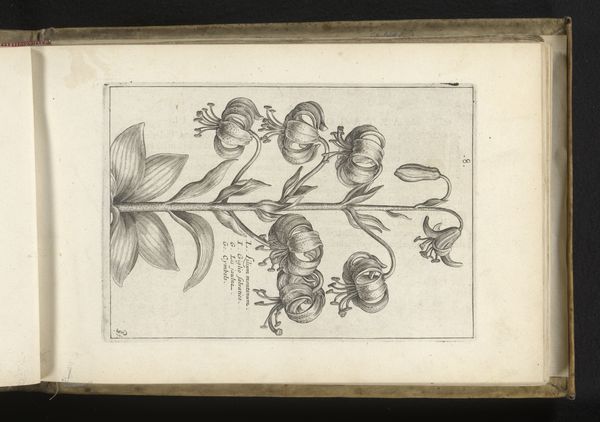
drawing, print, engraving
#
drawing
# print
#
line
#
northern-renaissance
#
engraving
Dimensions: height 214 mm, width 142 mm
Copyright: Rijks Museum: Open Domain
Willem de Passe’s engraving shows two multicoloured tulips. It was made during the first half of the 17th century, a period now known as Tulip Mania. The image acts as a record of the kinds of commodities being traded on the Dutch markets. At the time, rare bulbs were traded for exorbitant prices. Why tulips? Their colours and variations were seen as exquisite and fashionable. But we can also see how they became entangled with rising capitalism. The Dutch art market was burgeoning, and new genres such as still life painting were gaining popularity. These kinds of botanical images served not only as records, but also as aspirational objects, indicating the wealth and taste of their owners. The image of tulips became a kind of currency. To understand these images better, it's useful to look at historical auction records and merchants’ inventories. This helps us to understand not only the history of art, but also of economics and society itself.
Comments
No comments
Be the first to comment and join the conversation on the ultimate creative platform.
